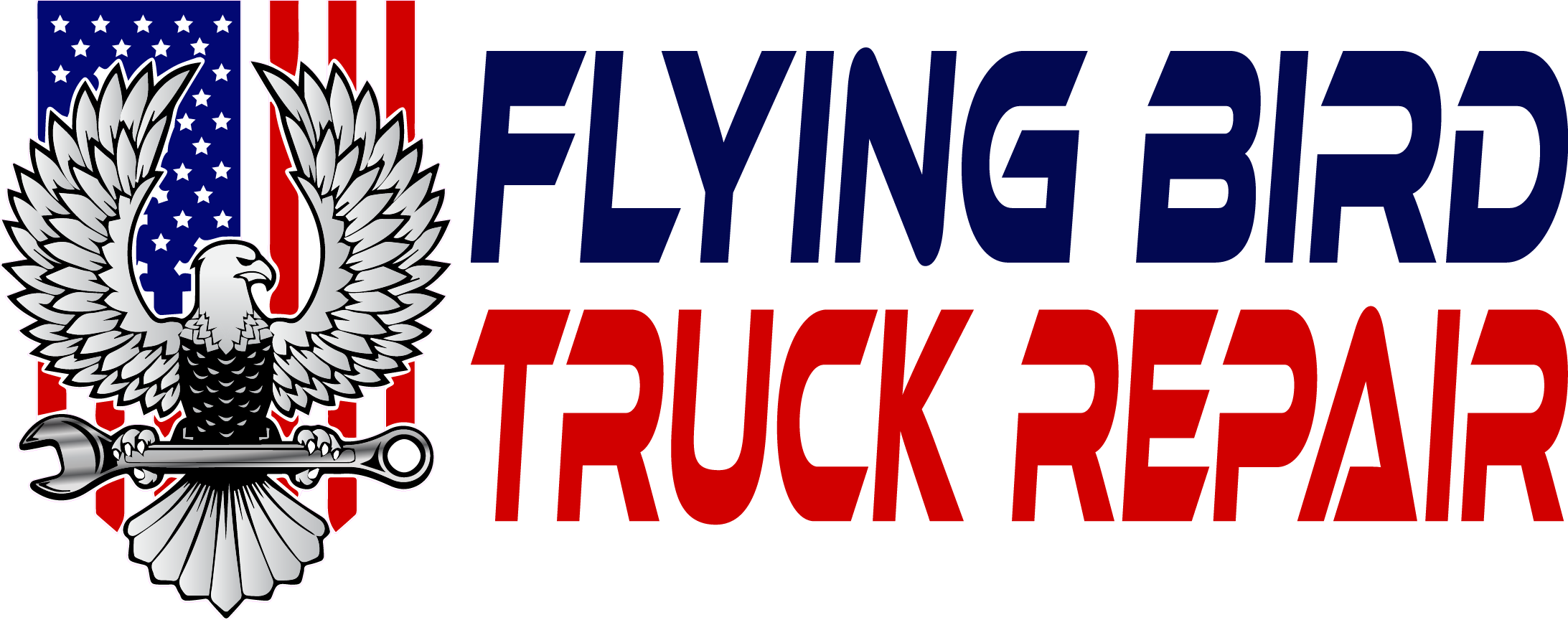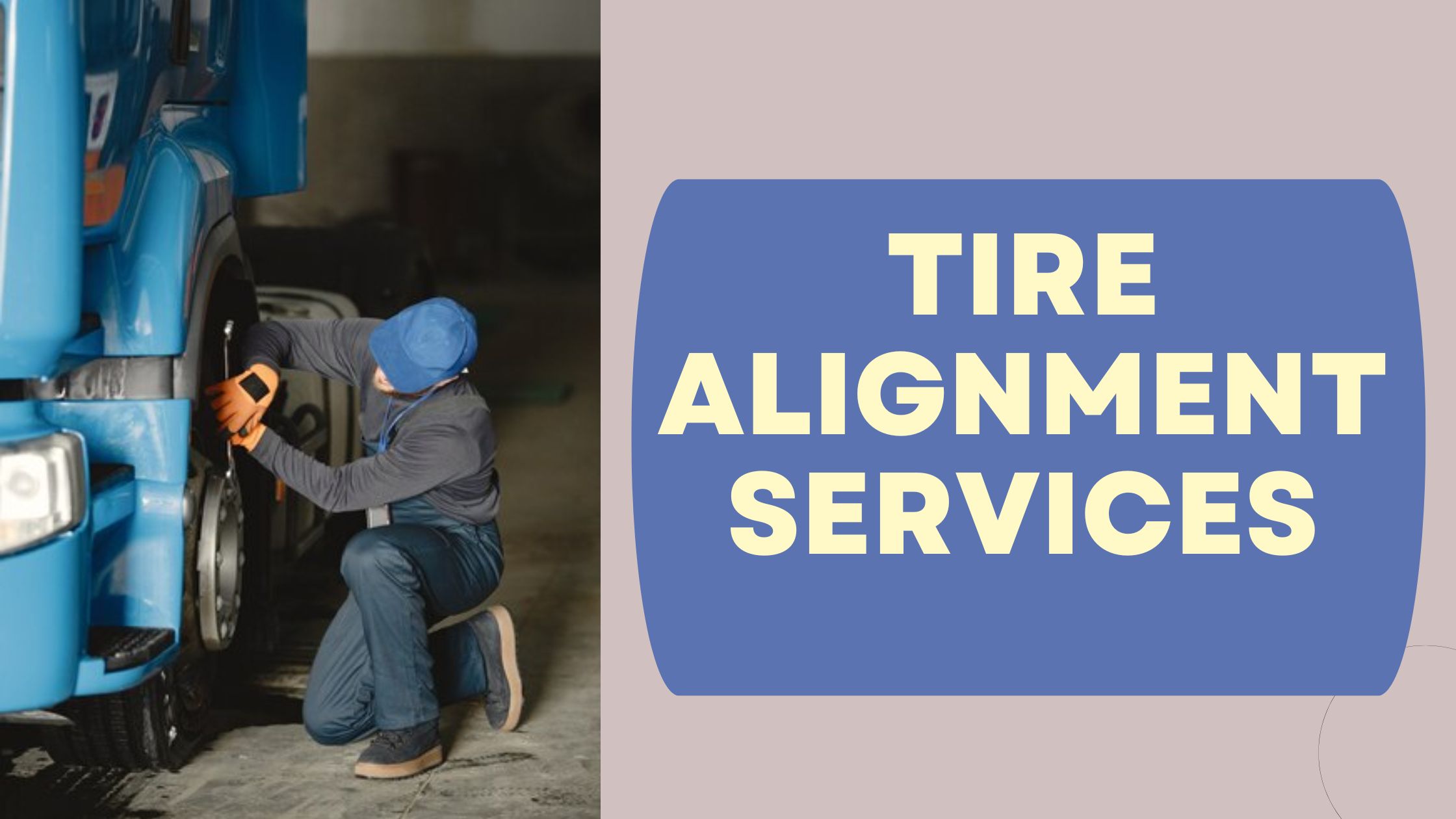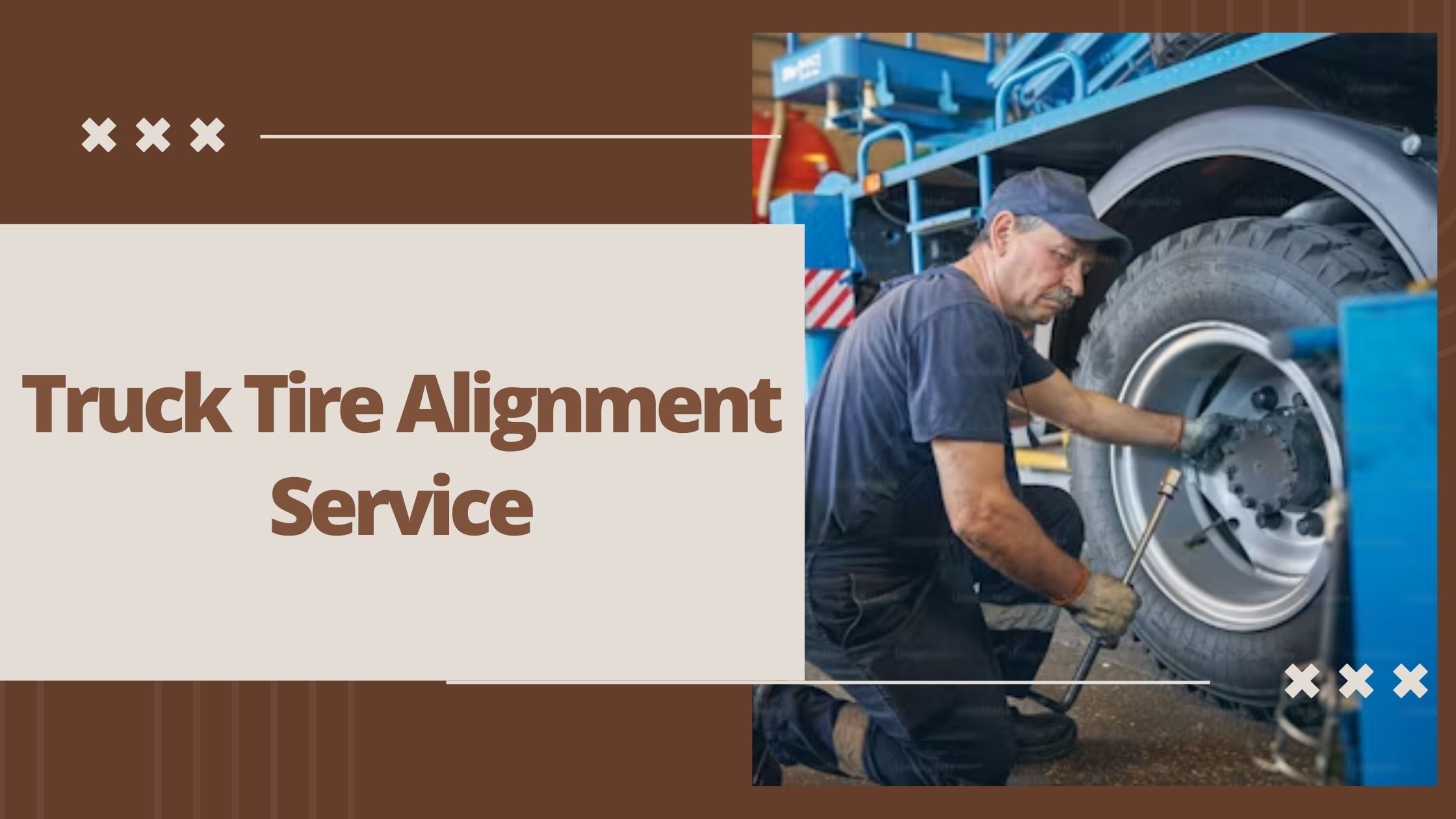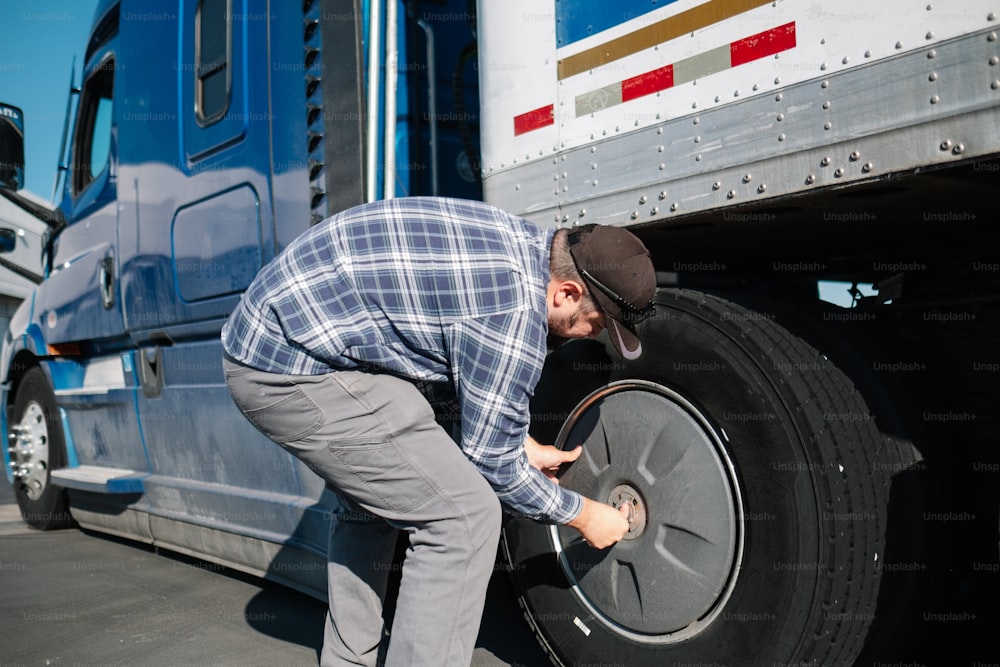Key Highlights
- Keeping your truck’s tires aligned right is key to stopping uneven tire wear, saving on gas, and making them last longer.
- If your steering wheel shakes, it might mean the wheels of your truck aren’t lined up properly.
- To keep things running smoothly and safely, it’s important to regularly check and adjust how the wheels are aligned.
- With trucks, you’ve got a few ways to align the tires: there’s front-end alignment, thrust alignment, and doing all four wheels at once.
- By ensuring proper alignment of your truck’s tires can lead not only to better fuel efficiency but also improved handling of the vehicle.
Introduction
Making sure your truck’s tires are lined up just right is super important for keeping it running smoothly and safely. When everything is in proper alignment, all the wheels point straight ahead and sit flat on the ground. This helps stop your tires from wearing out unevenly, saves you gas, and makes your tires last longer.
If things aren’t aligned properly, you might run into some problems. Uneven tire wear happens when the alignment is off, meaning you’ll have to replace your tires more often than you’d like. Also, if the alignment isn’t right, it can make your steering wheel shake which makes driving a bit of a challenge. Feathering, or tires with smooth tread on one side and sharp tread on the other, is a common sign of poor toe alignment.
To keep these issues at bay, regular checks and maintenance are key to making sure everything stays aligned as it should be. Fixing any misalignment quickly will help avoid extra damage and keep those tires going strong for as long as possible. In this blog post we’re diving into what truck tire alignment involves – why getting it right matters so much; how to tell when an adjustment is needed; exploring different kinds of alignments; plus understanding how good or bad alignment impacts overall performance.
Understanding Truck Tire Alignment
When we talk about truck tire alignment, it’s all about tweaking how the tires touch the road. By adjusting the wheel angles, they end up standing straight up and down and line up side by side perfectly. A few things play into getting this right, like the tilt of the steering axis, a bit of forward lean known as positive caster, and parts that make up the suspension system. Making these adjustments, including the angle of the steering axis, helps tires wear out evenly and makes sure your ride handles well and performs its best while you’re driving on the side of a vehicle.
What Is Truck Tire Alignment?
When we talk about truck tire alignment, or wheel alignment, it’s all about tweaking how the tires touch the road. The main aim here is to get those wheels standing straight up against the ground and lined up nicely side by side. To pull this off, mechanics adjust how the wheels tilt and line them up with what’s called the steering axis. This process is crucial for maintaining perfect truck tire alignment and ensuring smooth operations on the road, which is why it is important to seek professional services like truck wheel alignment from Flying Bird Truck Repair.

With respect to steering axis, imagine a line that goes right through your truck’s steering system down to where it meets the road. This angle of inclination of your steering axis plays a big role in making sure your ride feels stable and easy to handle. Getting proper alignment means setting this angle just right so you can steer smoothly and keep control easily.
Why Is Proper Alignment Crucial for Trucks?
Getting your truck’s wheels lined up just right is super important for a bunch of reasons. For starters, it helps your truck use less fuel and minimizes driver fatigue. With everything in the right place, your tires roll easier and don’t drag, so you end up saving money on gas over time because misaligned wheels can make your truck guzzle more fuel. Proper truck wheel alignment is crucial for safety and performance on the road, as well as for the longevity of your tires. It also has the added benefits of saving you money and being environmentally friendly.
Then there’s the fact that keeping things aligned means your tires last longer. When all four wheels point straight ahead like they’re supposed to, the wear and tear on each tire happens evenly. This stops one part of a tire from getting worn out too fast compared to others which can really cut down how long they last. So by sticking with regular checks and adjustments, you won’t have to swap out those tires as often.
And not to forget about driving smoothly and safely – having everything aligned properly makes a big difference here too. If things are off even by a little bit, it could cause steering wheel vibration or make controlling the vehicle tougher than it needs to be especially when trying tricky maneuvers or during bad weather conditions ensuring proper alignment keeps these issues at bay enhancing both handling capabilities and safety while you’re cruising around.
Signs Your Truck Needs an Alignment
Knowing when your truck might need its wheels aligned is pretty important. For starters, if the tires show uneven wear, with one side getting worn out faster than the other, that’s a big hint something’s not right. This kind of tire wear screams improper alignment.

On top of that, if your steering wheel feels like it’s off to one side instead of straight ahead while you’re driving on a straight road, chances are your wheels aren’t lined up correctly. And if you find yourself having to adjust the steering more than usual just to keep going straight, it probably means there’s an issue with how everything is aligned under there.
Uneven Tire Wear Patterns
When your tires don’t wear out evenly, it’s usually because they’re not lined up right. This can make your tires last for a shorter time and not work as well. Here are some ways you might see this happening:
- With toe wear, the edges of your tires get worn down faster than the middle part. This happens when the wheels aren’t straight with each other, showing that there’s something off with how they’re aligned.
- Feathering is when one side of the tire looks smooth but the other side has sharp edges. It points to an issue with how straight the wheels are too.
- Cupping occurs when parts of your tire start to dip in and look like cups due to uneven wearing. Problems with alignment or suspension often cause this.
If you spot any signs like these on your truck’s tires, getting its alignment checked and fixed is crucial so you can avoid more damage and keep those tires running smoothly.
Truck Pulling to One Side
When you’re driving and notice your truck is leaning more towards one side, it’s often a clue that something isn’t right with how the wheels are set up. This issue, known as improper alignment, messes with steering and control because the truck doesn’t move straight like it should.
A couple of things can make this happen:
- With improper alignment, if the angles called toe, camber or caster in your wheels aren’t set just right, your truck will likely start pulling to one side.
- On top of that, problems with suspension components might be at play too. If parts of the suspension are worn out or damaged in any way, they won’t hold everything in place properly which also leads to misalignment.
So if you find yourself struggling to keep your truck going straight because it keeps veering off course on its own accord due to either an incorrect wheel setup or issues within its underpinnings (suspension), getting those checked out sooner rather than later is key for safe driving.
Steering Wheel Misalignment
When your steering wheel starts shaking or doesn’t line up right, it’s often a clue that something’s not quite right with how the wheels are set up. This improper alignment means the wheels aren’t sitting exactly as they should, making your drive feel a bit off.
There are a few reasons why this might happen:
- When the toe setting isn’t correct, meaning the front of your tires point inward or outward instead of straight ahead, it can make your steering wheel shake or seem like it’s not straight. This happens because the tires aren’t rolling together in perfect harmony.
- Issues with camber or caster angles can mess things up too. These angles have to do with how much your wheels tilt and turn, affecting how stable and well-handled your car feels on the road.
If you ever notice these signs of misalignment while driving, getting them checked out is key for keeping everything running smoothly and safely.
Types of Truck Tire Alignment
When it comes to getting your truck’s tires aligned, there are a few different methods out there, each one aimed at fixing specific issues. Here’s what they involve:
- With front-end alignment, the focus is on making sure the front wheels of your truck are straight and lined up with each other, as well as being square with the ground.
- Then you have thrust alignment. This method is all about lining up the back axle so it matches up right with the front axle. It helps keep your truck moving straight without veering off course.
- Lastly, there’s four-wheel or full alignment. This approach takes care of all four wheels at once for a thorough fix-up that ensures everything runs smoothly and evenly to avoid tire wear.
By tackling wheel alignment this way—whether it’s just adjusting those front wheels or going for a complete overhaul including both axles—you’re looking after not only how well your ride handles but also helping extend those tires’ life span.
Front-End Alignment
Front-end alignment is all about making sure the front wheels of your truck are set straight. It’s important that these wheels stand side by side, perfectly parallel, and at a right angle to the road.
When doing this kind of alignment, the person working on it will check out and tweak parts like tie rods, ball joints, and control arms in the suspension system. By fine-tuning these bits and pieces, they make sure your truck’s front tires are pointing in exactly the right direction for smooth driving and even tire wear.
Having a proper front-end alignment matters a lot because it helps keep your truck moving straight without pulling to one side. It also makes steering easier and improves how well you can handle your vehicle. To avoid any issues with how your truck drives or uneven wearing down of tires, getting regular checks on those front wheels’ alignment is key.
Thrust Alignment
Thrust alignment is all about making sure the back wheels of your truck line up right. It’s key for keeping the rear axle in line with the front one, which helps your truck drive straight and stay stable.
When doing a thrust alignment, a technician will check out and tweak things like suspension and axle parts that play a big role in how well the rear axle lines up. By getting these adjustments just right, they make sure your truck drives smoothly, keeps its stability, avoids uneven tire wear, and doesn’t give you trouble steering.
This kind of alignment is super important if you’re hauling heavy stuff or pulling trailers often. It makes sure weight gets spread out evenly so your truck can follow a straight path easily and handle better while driving.
Four-Wheel Alignment
When we talk about wheel alignment, or what some folks call full alignment, it’s all about getting those four wheels on your truck lined up just right. This kind of setup is the best way to make sure everything runs smoothly and that your tires wear out evenly.
With a four-wheel alignment, the person fixing up your truck will check and tweak parts that keep all four wheels in line. They’ll use some fancy tools and an alignment system to measure how each wheel sits and then adjust them so they’re exactly where they need to be for proper alignment.
This step is super important if you’ve got a commercial truck that hauls heavy stuff or has a unique suspension design. It keeps the weight spread out evenly, makes sure your tires don’t get worn down too fast (tire wear), and helps with steering straight ahead.

How Truck Tire Alignment Affects Performance
Getting the tires on a truck lined up just right is super important for how well it runs. When everything’s in proper alignment, not only does your truck use less gas, but its tires also last longer and you get to enjoy a smoother ride.
With the wheels set straight, there’s less drag which means better fuel efficiency. On top of that, when all four tires wear out evenly because they’re aligned correctly, you won’t have to swap them out as often.
Also, having everything in line makes driving easier. It helps keep the truck steady on the road without shaking too much and lets you steer more smoothly. This way, every trip feels nicer since your vehicle handles better overall.
Fuel Efficiency
When your truck’s tires are lined up just right, it helps with fuel efficiency. With everything in proper alignment, the wheels don’t fight against the engine, making it easier for your truck to move forward without using extra gas. This means you get better mileage and spend less on fuel.
On the flip side, if those wheels aren’t set straight, they create drag. This makes the engine work harder than it needs to, eating up more fuel as a result. By keeping an eye on ensuring that everything is aligned properly, you’re not only helping your wallet by saving on gas but also making sure your truck runs smoothly.
It’s important to regularly check and adjust how well-aligned your tires are if you want to keep getting good fuel efficiency out of your vehicle.
Tire Life and Safety
Keeping your truck’s tires aligned right is key for making sure they last longer and keep you safe. When the alignment is spot on, the tires wear out evenly, which means they get to stick around a bit longer. But if things are off track, it leads to uneven tire wear, including irregular tire wear. This makes some parts of the tire grow old quicker than others, increasing the risk of accidents due to reduced grip and stability while driving. By sticking to proper alignment, truck owners can ensure the longevity of their tires, improve safety on the road, and avoid the need for premature tire replacements due to irregular tire wear.
Overall Vehicle Handling
Getting the truck tires lined up just right is super important for how well the truck drives. When everything’s in line, steering feels spot-on and driving’s a breeze. But if things aren’t aligned, it can make the truck veer off to one side by itself, which makes it tough to steer straight. This could tire out the driver pretty quickly and even bump up the chances of having an accident. By making sure everything’s properly aligned, drivers will have an easier time behind the wheel and help keep everyone safer on the road.
The Truck Tire Alignment Process
To get a truck’s tires lined up just right, there are a few steps that need to be followed. It all begins with checking out the tires and figuring out what needs to be fixed, which is done with an alignment machine. After that, the person fixing it will make some tweaks here and there so everything lines up as it should. Once they’ve got everything set straight, they’ll do one more check to make sure it’s all correct. This might also involve making sure the weight on each wheel is spread out evenly through something called wheel balancing. They use special tools and know-how throughout this whole process to achieve proper alignment, ensuring your ride performs well and stays safe when you’re driving.
Inspection and Initial Assessment
Starting off with the truck tire alignment, the first thing done is a thorough check-up and figuring out what needs to be fixed. This step involves looking over the tires and how straight the truck sits by using an alignment machine. The person doing this will look for clues that things aren’t lined up right, like if one side of a tire is more worn down than another or if holding onto the steering wheel feels shaky. With help from an alignment machine that gives exact numbers, it becomes clear what adjustments are needed to get those tires sitting just right. Getting this initial rundown helps understand how much things are off track and what steps need to be taken to ensure everything’s in proper alignment.
Adjustments and Corrections
After the first check-up, the technician gets to work on fixing and tweaking things so your truck’s tires line up just right. They’ll tweak a few angles – toe, negative camber, outward tilt, and negative caster – to make sure everything is as it should be. With toe adjustment, they ensure your tires point straight ahead instead of veering off. Negative camber adjustment makes sure your tires stand upright and don’t lean too much one way or another. And with negative caster adjustment, also known as negative caster, they ensure your truck has balanced steering, stability, and cornering. To get these adjustments spot-on, they use some special tools along with an alignment system that helps in getting accurate results every time. This careful tuning helps avoid uneven tire wear and keeps your vehicle running at its best.
Post-Alignment Testing
Once the tweaks and fixes are done, we do a check-up called post-alignment testing to make sure everything’s lined up just right. With the help of an alignment machine, this step checks if the tires are set according to what was planned. On top of that, there’s wheel balancing which makes sure all tires share weight equally so you don’t get any odd shakes or issues while driving. This whole process is key for truck owners because it means they can trust their vehicle’s alignment is spot on. Plus, it leads to tires lasting longer, saving gas money over time and making sure your ride runs smoothly.
DIY vs. Professional Truck Tire Alignment
When talking about getting truck tires aligned, truck owners can either try fixing them on their own or go for professional help. For those who know a bit and can get to a tire shop easily, doing it themselves might work out. But going with experts comes with its perks. With the right tools and knowledge, professionals make sure your tires are perfectly aligned. They also offer a better deal when you think about how much time you save, how accurately they do the job, and what you end up paying in the long run. Before making a choice between DIY or professional services, truck owners should really think about what suits their situation best, especially when it comes to the cost and longevity of their commercial truck tires.
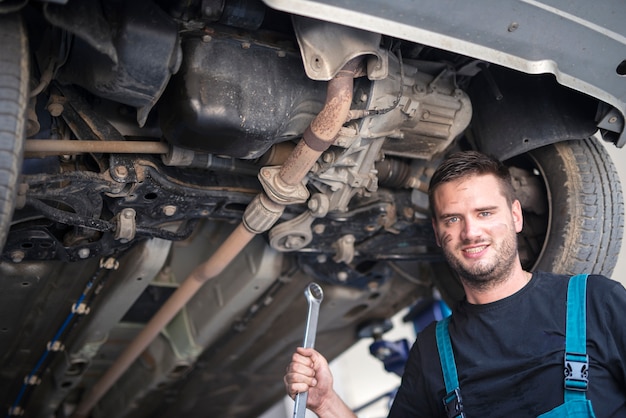
When to Consider DIY Alignment
For truck owners, trying out DIY alignment might make sense in some cases. For instance, after getting new tires put on your truck, it’s a smart idea to think about doing the alignment yourself. Since new tires can really affect how well your wheels are aligned, making sure they’re set up right from the start can help with tire wear and how well your vehicle drives. On top of that, if you have easy access to a tire shop that has all the gear and stuff you need, sorting out the alignment by yourself could save you some money. But remember, knowing at least the basics of how aligning works is key; plus sticking to what needs to be done correctly is crucial for getting it right. And if there’s ever any doubt or problems come up related to aligning those wheels properly? It’s probably best then to talk things over with someone who knows their way around these issues professionally.
Benefits of Professional Alignment Services
Professional alignment services offer several benefits that make them a preferable choice for many truck owners. Here are some key advantages of opting for professional alignment services:
- Specialized Equipment: Professional alignment services have access to advanced alignment machines and tools that ensure precise measurements and accurate adjustments. This equipment allows for proper alignment of the truck tires, maximizing tire performance and safety.
- Expertise and Knowledge: Professional alignment technicians have the expertise and knowledge to identify alignment issues and make necessary corrections. Their experience and training enable them to address specific alignment challenges and ensure optimal alignment settings for different truck types and models.
- Convenient and Time-Saving: Professional alignment services offer convenience and save time for truck owners. They have the necessary equipment and expertise to complete the alignment process efficiently, allowing truck owners to focus on other aspects of their business or personal life.
- Long-Term Cost Savings: Professional alignment services can provide long-term cost savings by reducing tire wear, improving fuel efficiency, and prolonging tire life. Proper alignment helps avoid premature tire replacements and related expenses.
- Better Deal: Professional alignment services often offer better deals and packages that include additional services such as wheel balancing and post-alignment testing. These comprehensive services ensure accurate alignment and optimal tire performance.
Truck owners can make an informed decision by considering their specific needs, budget, and resources before choosing professional alignment services for their trucks.
|
Column Name A |
Column Name B |
|
Specialized Equipment |
Advanced alignment machines and tools for precise measurements and adjustments |
|
Expertise and Knowledge |
Alignment technicians with experience and training in identifying and correcting alignment issues |
|
Convenient and Time-Saving |
Efficient completion of the alignment process, allowing truck owners to focus on other tasks |
|
Long-Term Cost Savings |
Reduction in tire wear, improved fuel efficiency, and extended tire life |
|
Better Deal |
Additional services such as wheel balancing and post-alignment testing for comprehensive alignment solutions |
Conclusion
Getting your truck’s tires aligned right is super important truck tire alignment for making sure it runs well and safely. When you know what to look out for, showing that your truck might need its wheels straightened and understand the kinds of Mobile Truck Repair Bakersfield CA services out there, you’re on track to help with fuel efficiency, make your tires last longer, and keep the ride smooth. You can either go to a pro or try fixing it yourself but checking regularly is key to keeping things in good shape. Don’t miss how crucial proper alignment is for boosting how well and safely your truck moves along the road. By staying ahead with regular checks, you’ll dodge expensive fixes down the line and enjoy driving more comfortably.
